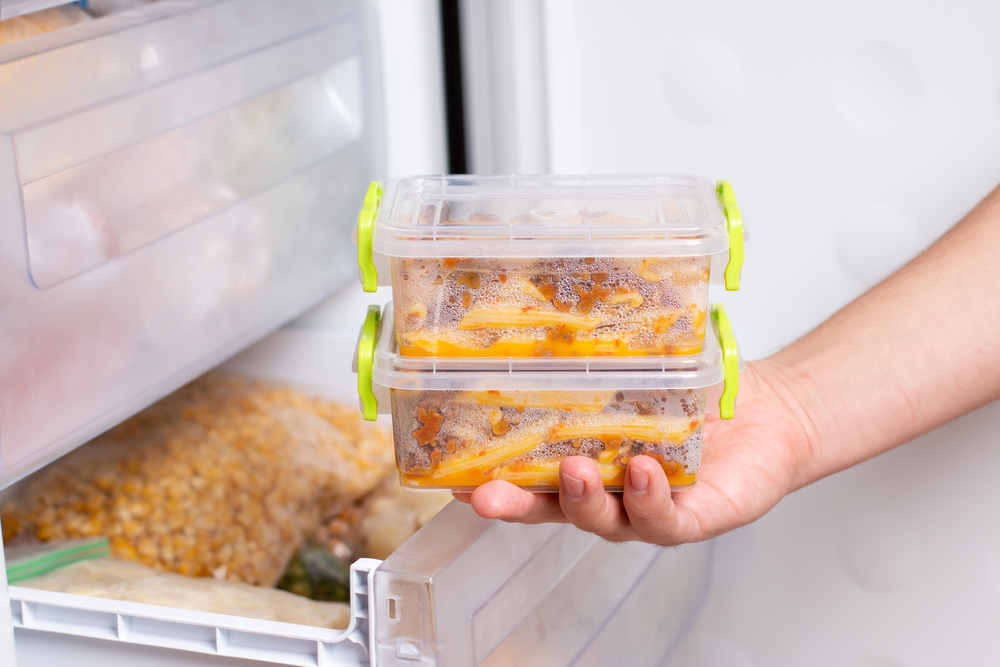There may be 99 problems when it comes to eating healthier, but knowledge is rarely one of them. Most of us are well aware that eating more vegetables, fruits, and whole grains, less processed foods, and cutting down on fat and sugar can be very helpful. However, knowledge isn’t always enough to break eating habits.
Let’s be clear about something. Frozen meals are one piece of the puzzle that can increase our chances of choosing healthy foods instead of junk food. In this article, we’ve decided to provide a kind of guide so both you and your loved ones can make healthier choices without having to undertake a complete overhaul. And perhaps surprisingly, this can be done with frozen foods.
As you may know, frozen meals have indeed a bad rap. We understand that, so we thought acknowledging the disadvantages of frozen food is the right thing to do. Here are some things to consider before choosing a frozen meal:
- Fresh food tastes better than frozen food.
- Cooling chain issues can lead to health problems.
- There’s a limited selection of frozen meals.
- You may forget the food in the freezer.
- When food is frozen, the texture can change.
- Some frozen meals contain preservatives.
Now, you must have heard that frozen food is cancerous. To clear that up, there’s no evidence that frozen meals cause cancer. Freezing often extends a food’s shelf life by storing it for a longer period of time. Also, bringing foods to temperatures below 0°F will prevent spoilage caused by microorganisms.
Keep reading to read the answers to the most common questions related to frozen food!

Is frozen food as bad as fast food?
On average, those who eat frozen meals consume 253 fewer calories than those who eat fast food. Compared to fast food eaters, those who reported consuming frozen food had a better Healthy Eating Index, ate less solid and saturated fats, and consumed 14 less refined grains while eating 25% more vegetables and 61% more whole grains.
The same study funded in part by Nestle USA found that frozen food eaters consumed more key nutrients than fast food eaters, such as vitamin C, vitamin A, fiber, and dietary minerals like magnesium, calcium, and potassium.
So, next time you have no options in your fridge, go for a frozen meal that was prepared using no shortcuts.
Can I eat frozen vegetables every day?
Most folks rarely eat their recommended daily intake of vegetables. Frozen foods can boost your calcium, potassium, and fiber intake when compared with non-frozen food. Eating frozen meals can also help you maintain a healthy heart by lowering your sodium intake.
Usually, vegetables are frozen immediately after harvesting. So, in most cases, freezing preserves the vegetables’ key nutrients. In fact, one study found that blanching and freezing vegetables for up to two months had no effect on their phytochemical content.
However, studies also show that freezing may have a different effect on certain vegetables. For instance, it seems that frozen broccoli is higher in vitamin B2 (riboflavin) than fresh broccoli. Frozen peas, on the other hand, are lower in this vitamin.
Long story short, eating frozen vegetables every day won’t affect your health — you’ll be losing a tiny amount of certain nutrients, at worst. But this is clearly better than grabbing junk food.
Which frozen vegetables are the healthiest?
- Edamame – You can use them in stir-fries, as a topping for grain bowls or salad, or you could mash some into homemade guacamole.
- Spinach – Add it to smoothies, pasta dishes, or enchiladas.
- Asparagus – Roast it along with salmon, or throw it in a pasta dish.
- Butternut squash – This is a tasty replacement for mashed potatoes.
- Kale – Drop it into sauces, smoothies, and soups for a boost of flavor, color, and nutrition.
- Broccoli – Steam and toss with salt and butter, or roast with a sprinkle of olive oil and lemon juice.
- Mixed Vegetables – A wonderful choice for rice, soups, and mac and cheese.

Can you eat a 2-year-old frozen piece of meat?
We’ve all been there. We head to the grocery store to get a few things, only to find that our favorite meats are on sale. If you’re like many folks who enjoy a good deal, you fill up your cart with raw steak and chicken in the hopes of saving both money and time in the long run. And while you’re grabbing the packets, you wonder how long meat can stay safely frozen.
According to the US Department of Agriculture, any food that’s stored at exactly 0°F will always be safe. However, the USDA recommends getting rid of uncooked ground meat after 4 months in the freezer and uncooked chops, roasts, and steaks after a year. Meanwhile, frozen cooked meat should be tossed after 3 months.
Does frozen food lose its flavor?
It is true that a frozen meal has a longer lifespan than fresh food. However, if you store foods in your freezer for too long, they begin to lose taste and quality. Also, freezing foods improperly — not vacuum-sealed, not flash-frozen — allows ice crystals to form within the food, a process that will damage the molecular structures. Basically, that’s what happens when many frozen leftovers change in texture, becoming “mushy”.
Pay attention to your freezer as well; if you don’t clean and disinfect it well, your food may absorb other odors, masking the original flavor — especially if the packagings aren’t well-sealed.
Are ice crystals on frozen meals bad?
There’s actually a name for when ice crystals form on frozen food: freezer burn. This condition is the result of air coming into contact with food, so it’s safe to say that a thin layer of ice crystals on a meal or ice cream is normal. By contrast, a thick layer of ice or large ice crystals indicate that the food won’t taste fresh.
Now, to actually give an answer to this question, ice crystals aren’t bad, nor cause illness. While the dry spots and color changes caused by freezer burn may not look appealing, frozen meals are completely safe to eat.

Why is it important that frozen food is defrosted naturally?
As soon as the food reaches a temperature of 40°F, bacteria start multiplying. Gross, right? That’s why we don’t recommend running frozen meals under hot water or thawing them on the kitchen counter. So, it’s important to keep your frozen food out of this “danger zone” of temperatures where bacteria come out of hibernation and thrive.
Also, if raw meat isn’t well thawed out when you cook it, your meal may be unevenly cooked. Plus, if food is partially frozen or still frozen, it will take longer to cook.
The cool room or refrigerator is the safest place where you should thaw frozen food. This takes longer than at room temperature, so you’ll have to plan ahead.
Are microwavable meals safe to eat?
Microwaves are a safe, quick, and very convenient cooking method. There’s no evidence that they are dangerous; in fact, some studies show that microwavable meals are better at preserving nutrients and preventing the formation of bacteria than other cooking methods.
According to the FDA, when cooking in a microwave, it’s important to stir your meal throughout the cooking process to make sure that heat is evenly distributed. However, what’s even more important is allowing your meal to remain undisturbed in the microwave for at least 2-3 minutes after the timer has finished.
Do you want to know what the world’s healthiest people have in common? Here you may find some answers!









1 thought on “You Ask, We Answer: 8 Questions About Frozen Meals”
Very interesting article.